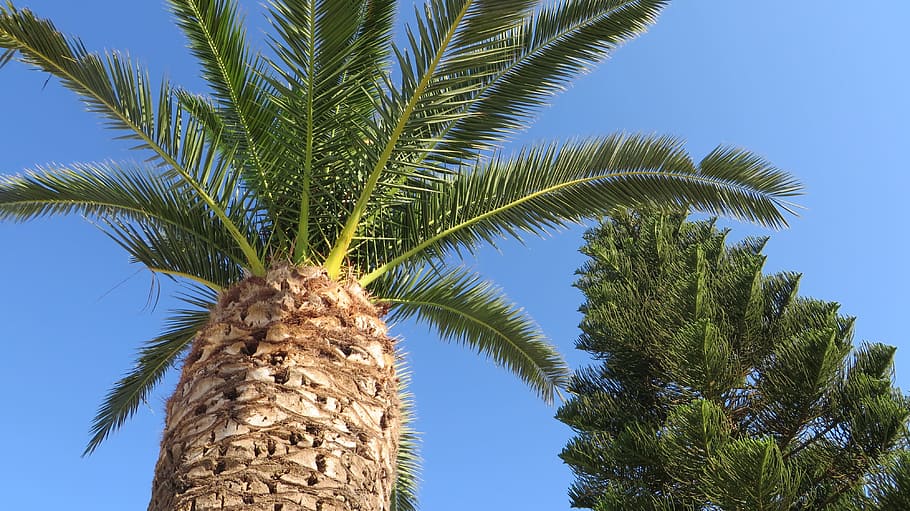Palm trees, with their iconic fronds and majestic presence, add a touch of tropical elegance to any landscape. To ensure your palm tree remains a stunning focal point, periodic pruning is essential. This comprehensive guide will walk you through the art of pruning, providing insights and techniques to sculpt your palm tree into a lush and balanced natural masterpiece.
Understanding the Pruning Process: Why, When, and How
Importance of Pruning
Pruning is more than just a cosmetic touch; it’s a crucial aspect of palm tree care. Regular pruning promotes the health of the tree, enhances its aesthetic appeal, and prevents potential safety hazards. By removing dead or diseased fronds, you allow the palm to allocate energy to new growth, ensuring vitality and longevity.
Timing Is Everything
Knowing when to prune is key. Aim for late spring or early summer, as this is the period of active growth for most palm species. Avoid pruning during the hurricane season to minimize stress on the tree. Timing your pruning sessions strategically contributes to the overall well-being of the palm.
Tools of the Trade: Essential Equipment for Pruning Success
Quality Pruning Tools
Invest in high-quality pruning tools, including sharp hand pruners, loppers, and a pruning saw. Clean, sharp tools ensure smooth cuts, reducing the risk of damage to the palm tree. Regular maintenance of your pruning tools, such as sharpening blades, is crucial for effective and efficient pruning.
Protective Gear
Palm trees are equipped with sharp fronds, so wearing protective gear is essential. Gloves and long sleeves protect your hands and arms from potential scratches, while safety glasses shield your eyes. Prioritize safety to ensure an enjoyable and injury-free pruning experience.
Pruning Techniques: Shaping Your Palms with Precision
Removing Dead Fronds
Begin by removing dead or yellowing fronds. Use hand pruners for smaller fronds and loppers for larger ones. Make clean cuts close to the trunk, avoiding damage to the healthy tissue. Dead fronds not only diminish the tree’s aesthetic but can pose safety risks if left unattended.
Thinning Out Excess Fronds
To maintain a balanced look, thin out excess fronds. Remove crowded or crossing fronds to allow sunlight and air circulation. This step promotes a healthier and more visually appealing palm. Prune with an eye for symmetry, ensuring a harmonious arrangement of fronds around the trunk.
Trimming Flower and Fruit Stalks
Trimming flower and fruit stalks not only enhances the tree’s appearance but also redirects energy back into the tree. Use caution when trimming, as some palm varieties have sharp thorns on these structures. Removing spent flower stalks prevents the tree from investing energy in producing seeds, encouraging new growth instead.
Special Considerations: Tailoring Pruning to Palm Varieties
Fan Palms (Palmate Leaves)
Fan palms, with their distinctive fan-shaped leaves, require a different approach. Prune only dead fronds and avoid cutting into the green, healthy tissue. Fan palms often benefit from a less aggressive pruning routine, focusing on maintenance rather than extensive removal.
Feather Palms (Pinnate Leaves)
Feather palms have feathery, arching fronds. Prune away dead fronds and any that hang below a horizontal line to maintain a tidy appearance. Feather palms may require more frequent pruning to keep the fronds from becoming too densely packed.
Aftercare and Maintenance: Nurturing Your Pruned Palm Tree

Fertilization and Watering
After pruning, provide your palm tree with a balanced fertilizer to support new growth. Ensure adequate watering, especially during dry periods, to aid recovery and maintain overall health. Proper fertilization and watering contribute to the palm’s ability to regenerate and flourish after the pruning process.
Monitor for Pests and Diseases
Regularly inspect your palm tree for signs of pests or diseases. Promptly address any issues to prevent them from spreading and compromising the health of your pruned tree. Common pests include scale insects and spider mites, which can be mitigated with horticultural oil or insecticidal soap. Disease prevention is vital for sustaining a thriving palm.
Crafting a Timeless Landscape with Pruned Palms
As you embark on the journey of pruning your palm tree, envision the lush and balanced landscape that will emerge. With the right tools, techniques, and a deep understanding of your palm’s specific needs, you can sculpt nature to create a timeless and captivating outdoor space. By following this comprehensive guide, you not only nurture the health of your palm tree but also contribute to the aesthetic harmony of your surroundings.



